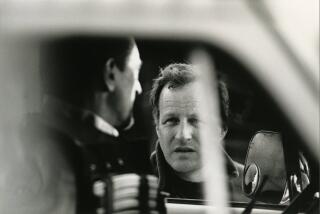Peter Maas; Wrote ‘Serpico,’ ‘Valachi Papers’
- Share via
and Wire Reports
Peter Maas, who wrote convincingly about crooks and incorruptible cops in such best-selling books as “Serpico,” and “The Valachi Papers,” died Thursday. He was 72.
Maas died at Mount Sinai Hospital in New York City. The cause of death was not announced.
Along with writers like Tom Wolfe and Jimmy Breslin, Maas considered himself a practitioner of “the New Journalism,” and brought dramatic qualities of fiction writing to his nonfiction articles and books during the 1960s. His resume included work at New York magazine, the Saturday Evening Post, Look and Collier’s.
In 1969, Maas wrote “The Valachi Papers”--his account of mob soldier Joseph Valachi’s brutal career and decision to become a federal informant. Valachi’s 1963 testimony before a congressional panel had thrust the mob into the national spotlight.
Twenty publishers rejected Maas’ manuscript, but it eventually became a runaway international bestseller and then a hit movie.
More than 30 years later, Maas collaborated with a latter-day Valachi, a Gambino crime family underboss whose testimony landed John Gotti behind bars for life. The book, “Underboss: Sammy the Bull Gravano’s Story of Life in the Mafia,” became a New York Times No. 1 bestseller.
In between, Maas wrote “Serpico,” the story of New York City policeman Frank Serpico and his battle against departmental corruption. Maas gave half of his $400,000 screen rights income to Serpico.
“After all,” he observed, “it’s his life.”
A native New Yorker, Maas began his writing career while a student at Duke University. He obtained an exclusive interview with labor leader Walter Reuther and sold his scoop to Associated Press for $100, he recalled in an interview last year.
He worked for the New York Herald Tribune in Paris and then joined Collier’s in 1955. After Collier’s folded, Maas worked on a lobster boat before resuming his journalism career with Look magazine. While at Look, he drew national attention for his story about a Louisiana black man who had been on death row longer than any other prisoner in the United States.
An inadvertent luncheon tip from then-Atty. Gen. Robert Kennedy about a Mafia informant put Maas on the Valachi story. He wrote a series of three articles for the Saturday Evening Post, and followed with a book.
It took a court fight to win the right to publish the story after the government balked, claiming it would be “detrimental to law enforcement.”
While at the Post, Maas exposed syndicated columnist Cholly Knickerbocker as an agent of the Dominican Republic.
Maas’ nonfiction books included “The King of Gypsies,” which chronicled a power struggle among three generations of a “royal” Gypsy family. In his review of the book, critic P.S. Prescott described an underlying concern of Maas’ work, noting that the author “writes books about people who live on the margin of our heterogeneous society and attack its center. These are vicious people--Mafiosi, corrupt cops, Gypsies--who often act violently, but always so unobtrusively that most of us do not notice them.”
After “King of the Gypsies,” Maas tried his hand at a novel with “Made in America,” which told the story of an ordinary man who has a once-in-a-lifetime chance to strike it rich but borrows money from a loan shark to do it. Novelist Evan Hunter wrote that Maas’ leap from nonfiction to fiction “was well worth chancing.”
Other books by Maas include “Marie: A True Story,” which became a movie with Sissy Spacek; “The Terrible Hours,” his account of the first successful submarine rescue; and “Killer Spy: The Inside Account of the FBI’s Pursuit and Capture of Aldrich Ames, America’s Deadliest Spy.”
Maas is survived by his third wife, Suzanne Maas, and two sons.
More to Read
Sign up for our Book Club newsletter
Get the latest news, events and more from the Los Angeles Times Book Club, and help us get L.A. reading and talking.
You may occasionally receive promotional content from the Los Angeles Times.







